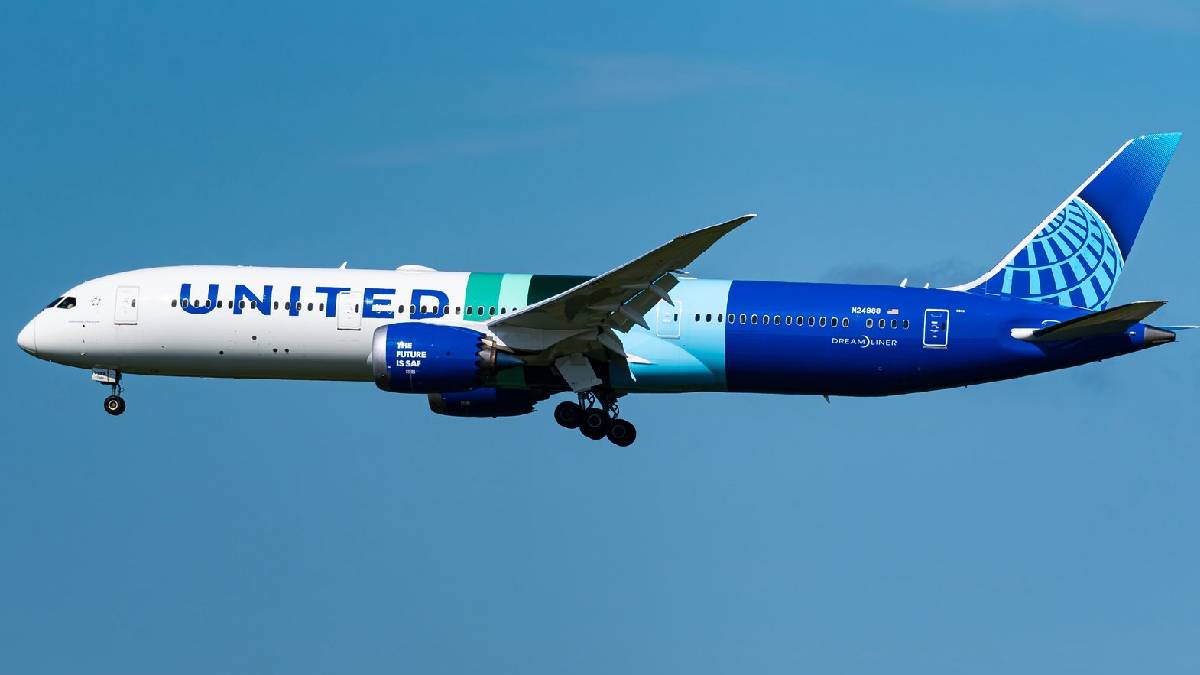United Airlines Flight UA108 on its Munich route issued a Mayday at ~5,000 ft after left engine failed. The crew held at 6,000 ft to dump fuel, then landed safely at Washington Dulles. No injuries; aircraft grounded pending investigation.
✈️ Incident Overview
Bhai, ek ajeeb si flight story hai—Flight UA108, a Boeing 787‑8 Dreamliner operated by United Airlines, had a scary moment on July 25, when its left engine failed just minutes after take-off from Washington Dulles Airport. At around 5,000 feet, the pilot immediately called out “Mayday, Mayday” declaring an emergency. (turn0search0, turn0news16)
They circled northwest at 6,000 feet for 2 hours and 38 minutes to safely jettison fuel, clearing weight before returning for an emergency landing using ILS on Runway 19 Center. The whole process was calm and coordinated, ATC guided them step-by-step. (turn0search8, turn0search12, turn0news16)
Crew & ATC Coordination
Pilots remained composed, repeating the mayday call and sticking to emergency checklists. ATC responded calmly—directing turns, managing speed, and coordinating safe fuel dump zones away from other traffic. Dialogue between pilot and tower showed how crucial quick thinking can be. (turn0news16, turn0search5, turn0search8)
At about 16 km west of Dulles, the crew began dumping fuel under ATC supervision. Eventually, they received clearance for descent and executed a safe ILS landing—with engine disabled, the aircraft had to be towed off runway.(turn0news16, turn0search11)

Outcome
- No injuries onboard or on ground
- Emergency landing successful
- Aircraft grounded pending full technical investigation
- Authorities launching probe into engine malfunction
- Incident comes just weeks after the tragic June Dreamliner crash in India (Air India Flight 171) involving fuel cutoff and switch failures. Association adds gravity to the event. (turn0news24, turn0news21)
📉 Comparison with Recent Dreamliner Crash
Last month Air India Flight 171 (B787‑8) crashed near Ahmedabad. As engines died, the crew made a mayday call—but one engine relit partially too late. Sadly, 260 lives were lost. Investigators are still working on why the switches moved. (turn0news24, turn0news21, turn0news22)
Fortunately, UA108’s crew avoided such a fate—quick emergency handling and deliberate fuel dump made all the difference. This underscores how training and protocols matter in real emergencies. (turn0news21, turn0search10)
🙋 FAQs
Q1: What caused the engine to fail on UA108?
Early reports cite a left engine malfunction shortly after take-off at ~5,000 ft. Exact technical cause remains under investigation. (turn0search0, turn0search8, turn0news15)
Q2: How long did the flight stay airborne after Mayday?
Approximately 2 hours and 38 minutes, with fuel dumping before attempting emergency landing. (turn0news16, turn0search12)
Q3: Were passengers injured?
No, all passengers and crew landed safely with zero injuries reported. (turn0search11, turn0search2)
Q4: What happens next for this aircraft?
The plane is grounded at Washington Dulles pending detailed inspection. Aviation safety agencies will lead the probe. (turn0news15, turn0search11)
📝 Personal Perspective (From a Fellow Traveler)
“Yaar, imagine you take off on a long-haul flight and suddenly the engine fails—the heart skips! But the crew’s calm voice saying Mayday, they followed protocols, dumped fuel, and landed safely. That’s why training matters. That incident in India last month shook us; this time, thankfully no lives lost. Still, it’s a wake-up call—Dreamliner’s reputation is on watch, and regulators better dig deep.”
🔚 Final Thoughts
Flight UA108’s mid-air engine scare is a powerful reminder of aviation risks—even in modern jets like the Boeing 787 Dreamliner. But it’s also a testament to emergency preparedness: from declaring Mayday to fuel jettisoning and controlled landing under duress. Thankfully, everyone is safe this time. Yet parallels with the Air India tragedy cannot be ignored—investigators need to find answers so confidence in these aircraft is restored quickly. Stay safe, meri jaan.
⚠️ Disclaimer
This blog shares news-based insights for awareness and not meant as technical guidance. Incident details are based on official and media reports; aviation regulators are conducting thorough investigations.





